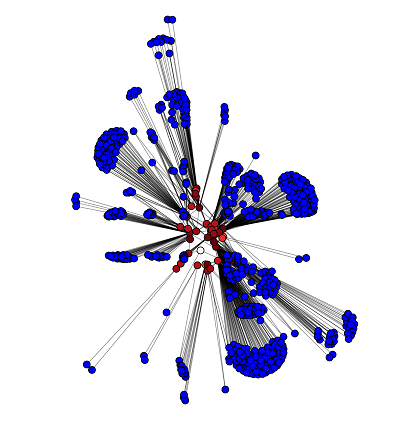The community structure analysis framework can be used on any type of network, but the tools available on this website
are intended for use on undirected, unweighted networks.
We considered networks with up to several hundred thousand nodes, and the scalability of the community detection methods under study
is the primary constraint on network size.
Because we were interested in analyzing the structure of real communities, we studied networks that contained external annotation that allowed us to identify such communities. These networks are listed below.
Because we were interested in analyzing the structure of real communities, we studied networks that contained external annotation that allowed us to identify such communities. These networks are listed below.
- Amazon product co-purchasing network, where product categories reflect real communities
- LiveJournal social network, where users explicitly join communities
- Genetic interaction networks for S. Cerevisiae, H. Sapiens, and D. Melanogaster, where gene functions identify communities. In our work, we used the PPI network files to identify networks, and the protein ID/gene ontology (GI) ID files to identify communities. Note that the files available may change as new interactions and genetic functions are discovered; in fact, these files have been modified at least once since our work.
- DBLP co-authorship network, where conferences and journals represent communities
- Additionally, Facebook data for students at a university was obtained with permission from Dr. Alan Mislove
